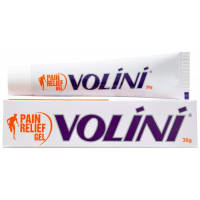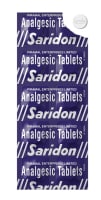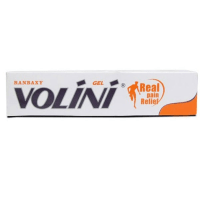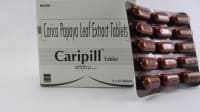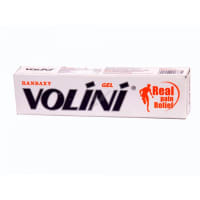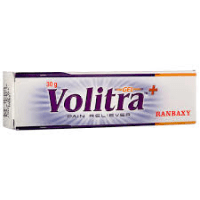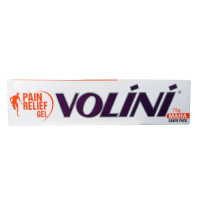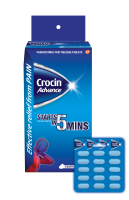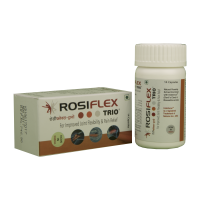USED FOR:
Pain relief
Nasal allergy symptoms
COMPOSITION:
Ketorolac (0.4% w/v)
Olopatadine (0.1% w/v)
Therapeutic Uses:
ophthal

No interaction found

WEIGH RISKS VS BENEFITS
Combipat Opthalmic Solution may be unsafe to use during pregnancy.Animal studies have shown adverse effects on the foetus, however, there are limited human studies. The benefits from use in pregnant women may be acceptable despite the risk. Please consult your doctor.

Combipat Opthalmic Solution is probably safe to use during lactation. Limited human data suggests that the drug does not represent a significant risk to the baby.

Do not drive unless you are feeling well.Combipat Opthalmic Solution may make you feel dizzy, tired or drowsy, you may also get headaches, visual disturbances, vertigo or have difficulty sleeping. This may affect your driving ability.

Combipat Opthalmic Solution is probably safe to use in patients with kidney disease. Limited data available suggests that dose adjustment of Combipat Opthalmic Solution may not be needed in these patients. Please consult your doctor.

Combipat Opthalmic Solution is probably safe to use in patients with liver disease. Limited data available suggests that dose adjustment of Combipat Opthalmic Solution may not be needed in these patients. Please consult your doctor.
Uses of Ketorolac
Ketorolac is used for pain reliefIt relieves pain in conditions like post-operative pain.
How Combipat Opthalmic Solution works
Ketorolac is a non-steroidal anti-inflammatory drug (NSAID). It works by suppressing the production of chemical messengers (prostaglandins) that cause inflammation (redness and swelling), fever and pain.
Common Abdominal pain, Constipation, Diarrhoea, Epigastric pain, Flatulence, Nausea, Vomiting, Indigestion.
Expert advice for Ketorolac
It should be taken with food or milk to avoid getting an upset stomach. It can cause serious complications like stomach bleeding and kidney problems if taken for a long time. Ketorolac can raise a risk of blood clots, heart attack, or a stroke. Inform your doctor if you are pregnant or planning to conceive or breastfeeding. Inform your doctor if you have ever been diagnosed with kidney or liver problems.
Q. Is Ketorolac stronger than hydrocodone?
No, Ketorolac is not stronger than hydrocodone. Opioid agents (hydrocodone) are generally stronger pain relievers than a non-steroidal anti-inflammatory drug like Ketorolac.
Q. Is Ketorolac a muscle relaxant?
No, Ketorolac is not a muscle relaxant. It is a non-steroidal anti-inflammatory drug and can be used to treat mild pain and inflammation.
Q. Is Ketorolac addictive or controlled substance?
No. Ketorolac is not addictive or controlled substance however it can be obtained only on production of valid prescription.
Q. Does Ketorolac expire?
Like all drugs, Ketorolac has an expiry date, which will be printed on the eye drop bottle. Do not use Ketorolac eye drops beyond expiry date.
Uses of Olopatadine
Olopatadine is used in the treatment of nasal allergy symptoms.
How Combipat Opthalmic Solution works
Olopatadine is an antihistaminic medication. It treats allergy symptoms such as such as itching, swelling, and rashes by blocking the effects of a chemical messenger (histamine) in the body.
Common Sleepiness.
Expert advice for Olopatadine
Consult your doctor and do not take olopatadine if you are pregnant or plan to become pregnant, or are breast-feeding.
Consult your doctor before discontinuing olopatadine treatment.
Eye drops:
Do not use olopatadine eye drops while you are wearing contact lenses. Do not use contact lenses for at least 10-15 mins after using olopatadine in the eye.
Avoid wearing contact lenses while you are on olopatadine eye drops treatment or while your eye is inflamed and red.
Temporary blurred vision or other visual disturbances may affect the ability to drive or use machines. If blurred vision occurs at instillation of olopatadine eye drops, wait until the vision clears before driving or using machinery.
If with olopatadine you are concomitantly using other eye drops or eye ointment medicines, leave at least 5 minutes between each medicine; Eye ointments should be administered last.
Always follow directions of use given in the package insert while using eye drops.
Oral:
Olopatadine when taken orally may cause sleepiness. Avoid driving a car or operating machinery when treated with oral olopatadine.
Do not use oral olopatadine if you have renal disorder or hepatic disorder.
Q. What is Olopatadine ophthalmic solution/eye drops used for?
Olopatadine is used to treat seasonal allergic conjunctivitis (infection and inflammation [itching, redness and swelling] of the conjunctive of the eye) cause due to pollens, dust, animal fur and other allergens
Q. Is Olopatadine a steroid?
No, Olopatadine is not a steroid. It belongs to a group of medicines called antihistamines. Olopatadine is an antiallergy medicine that decreases production of the chemical histamine which is responsible for initiating allergic responses
Q. How does Olopatadine work?
Olopatadine belongs to a group of medicines called antihistamines. It is an antiallergy medicine that decreases production of the chemical histamine which is responsible for initiating allergic responses.
Q. Is Olopatadine over-the-counter?
Yes, Olopatadine may be available over-the-counter. Patients should follow advice of the doctor regarding its use
Q. What are Olopatadine tablets used for?
Olopatadine is used in the treatment of allergic rhinitis, hives, and itch associated with skin diseases
Q. Is Olopatadine an antibiotic?
No, Olopatadine is not an antibiotic. It belongs to a group of medicines called antihistamines. Olopatadine is an antiallergy medicine that decreases production of the chemical histamine which is responsible for initiating allergic responses


 Combipat Opthalmic Solution
Combipat Opthalmic Solution  Bookmark
Bookmark
